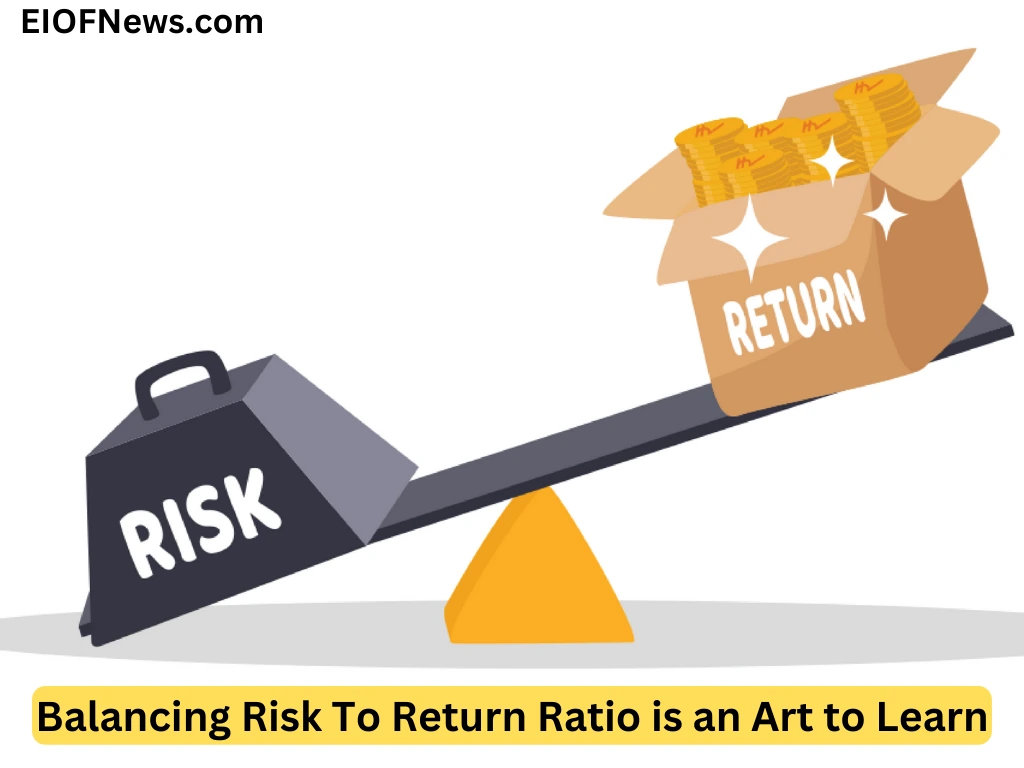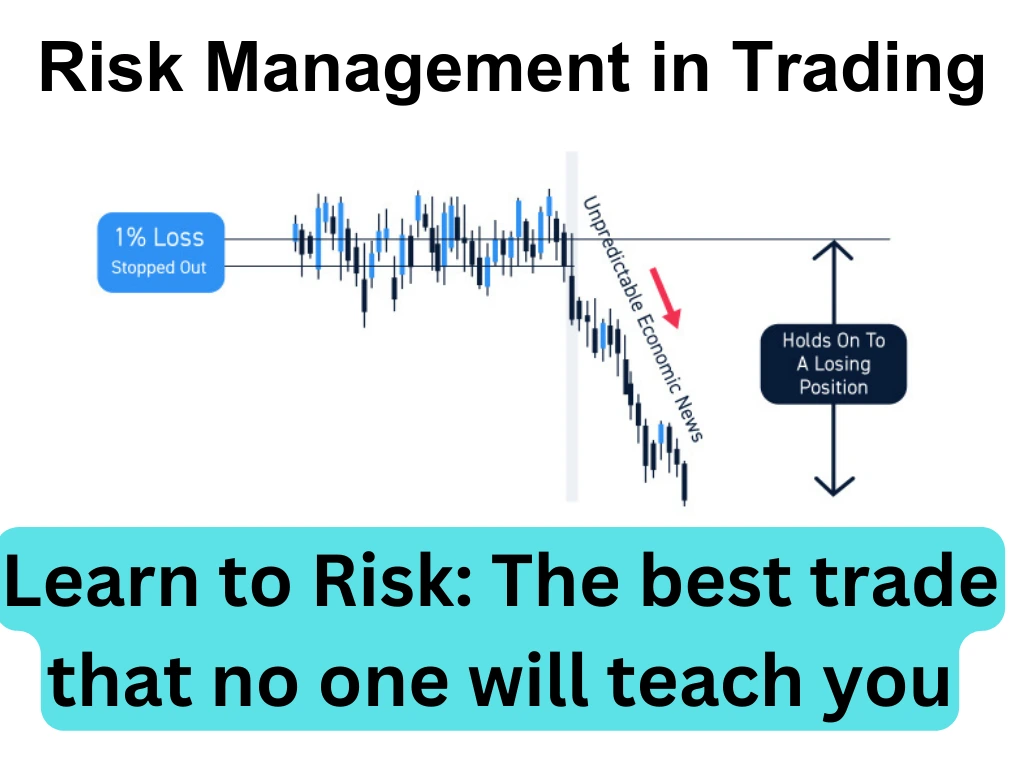Risk Management in Trading: Perhaps there is no such activity in which there is no risk of any kind, whether it is traveling, going to school, or taking admission to college, there is definitely some risk in everything. But after understanding these risks, we make decisions in a balanced manner and we get the reward of the risk in the form of a successful life. And same goes for the Stock market, trading, and investing. The important thing is to create a balance between risk and reward. It’s easy to say but hard to do.
Table of Contents
Today, in this article I will share with you some of the most practical ways to keep this risk-to-reward ratio in balance. If you follow this your trading will be on a whole new level. Today it’s my appeal to you guys to read it properly and try this risk management strategy for once in your trade and see the results for yourself.
02/50
This is Article 2 of 50 Article of Learning Trading from Basic to Super Advanced Level. Once you Complete this 50 Article series there is o need for you to read or watch anything else. You just have to focus on your goals and Daily Stock News and IPO News on The EIOF News to stay up-to-date.
Introduction
In the world of trading, uncertainty is the only constant. Every trade comes with a level of inherent risk that can lead to substantial financial losses if not managed effectively. Whether you are a seasoned trader or just starting in the financial markets, understanding and implementing risk management strategies is the major step.
If you look at any bank that has failed in history, you will find that the biggest reason for their Failure was the mismatch of their assets and liabilities. If companies are in trouble the reason is high debt and low earnings meaning a mismatch of debt and equity.
And if we see for the reason for the failure of traders then we will find poor risk-reward management. According to my whole trading experience, the person who can create a balance between Risk and Reward is a successful trader.
The two main reasons why risk management is so difficult are:
- Psychology
- Less talked about
Meaning no one tells how this is done. Now Let’s discuss how to keep Risk and reward Balanced.
Two percent Rule
A major risk management tool in trading is the use of stop-loss orders. These orders allow you to predetermine the maximum amount that you are willing to lose on a trade. By setting stop-loss orders at strategic levels, you can easily limit your potential losses and exit a trade when it moves against you, thus preventing further damage to your account.
What you want to do is, based on your account size, you want to know how much should I risk for each trade. Now, a typical rule is the two percent rule. So, when you follow the two percent rule, you have to make sure that you’re only willing to lose or put up a risk of two percent of your account size. What that means is, if your account is at twenty thousand rupees and you’re risking two percent, you should only lose a maximum of four hundred per trade, right?
So, for example, once again, you have twenty thousand rupees in your demat account, you’re risking two percent. If you’re risking two percent, the most you should lose on a single trade is four hundred rupees. Now, I don’t think you should increase this, especially starting out, I think even starting out, you can reduce this to maybe one percent, right? I don’t think you should go higher than two percent, and that’s like the rule of thumb that a lot of traders really, really follow.
And I understand, looking at this, it’s not exciting, right? But you want to understand, especially when you’re starting out, you want to limit your downside, like I said before, and by doing so, you want to have a fixed maximum loss per trade, already decided up for the day.
Extra Ordinary Risk
Major losses are often caused by a risk that was not even thought of. Let us see how this happens. Suppose the market opens a gap up or gap down the next day, which you had never imagined could happen. Major news is unpredictable like lockdown or war situations or liquidity risk like you go to sell stocks and you find no buyers, and a panic situation in the market.
Human Errors can often happen like you wanting to buy a stock and mistakenly ending it short-selling or price error. Make sure your broker is right for frequent trading.
Do your Homework Properly
If you want to see your trades profitable, you need to do your homework before the market opens. These are the checklist points you need to check before trading in the market.
- Chart Time Frame: Look at the market on daily, weekly, and monthly chart frames and analyze the upcoming day’s pattern possibility. Understand the market structure and look for any possible breakdown or breakout.
- Predict Long-term Chart Trend: Find the long-term trend on a weekly or monthly chart frame for sideways, bullish, or bearish market prediction.
- Predict Short-term Chart Trend: Similarly find the trend on daily and hourly chart frames.
- RSI: If the RSI on the chart is above 50, we will go for bullish and if below 50 then the market is in a bearish trend.
- Dow Jones: look at the Dow Jones market trend because most of the world market follows the US Market trends.
Diversification and Position Sizing

Spreading Your Risk
As we know Diversification is another key aspect of risk management. It involves spreading your investments across different assets or asset classes. By diversifying your portfolio, you reduce the impact of a single loss on your overall capital. Diversification can be achieved by trading various financial instruments, such as futures, options, bonds, commodities, and currencies.
Proper Position Sizing
Determining the right position size before entering your trade has also proven helpful for most traders to manage risk effectively. Risking too much capital on a single trade can result in unbearable losses, while risking too little may not yield significant profits. A commonly used rule of thumb is to risk no more than 1-2% of your trading capital as we already have discussed in the two percent rule on any single trade.
The Importance of Risk Management

Protecting Your Capital
One of the primary objectives of risk management in trading is to protect your capital. Trading involves putting your hard-earned money at stake, and without adequate risk management, you could risk losing a significant portion of it in a single trade. By implementing effective risk management techniques, you can limit your losses and ensure that your trading account remains intact even during periods of market turbulence.
Preserving Emotional Well-being
Trading can be emotionally taxing, especially when faced with losses. Proper risk management not only safeguards your financial capital but also preserves your emotional well-being. When you have a well-defined risk management plan in place, you are less likely to make impulsive decisions driven by fear or greed, which can lead to even greater losses.
Risk Management in Trading: Expert Insights
To gain a deeper understanding of risk management in trading, we’ve sought insights from seasoned traders and financial experts. Here’s what they have to say:
- John Smith, Forex Trader: “In the forex market, risk management is everything. It’s not about how much you can make but how much you can afford to lose. Always have a clear exit strategy.”
- Sarah Johnson, Stock Investor: “Diversification saved me during the market crash of 2008. While many lost heavily, my portfolio remained relatively stable due to a well-diversified approach.”
Conclusion
Risk management is the upward step of a successful trading journey. It is the art of protecting your capital, preserving your emotional well-being, and ensuring your long-term survival in the financial markets. By understanding your risk tolerance, implementing effective risk management tools and techniques, and embracing diversification, you can navigate the world of trading with confidence. Remember that every trade involves risk, but with the right risk management strategies, you can minimize the downside and maximize your potential for success.
As the saying goes, “In trading, it’s not about how much you make but how much you don’t lose.” So, take the time to develop a robust risk management plan, and you’ll be well on your way to becoming a more confident and profitable trader.
FAQ
What is the biggest mistake traders make regarding risk management?
One common mistake is overleveraging while trading. Using too much borrowed money from your broker can amplify losses because as the saying goes market is unpredictable. It’s essential to use leverage cautiously and within your risk tolerance.
How to manage emotions in losing trades?
Emotions can lead to impulsive decisions. To manage them, consider trading with a clear plan, setting stop-loss orders, and taking breaks when needed. Make a fixed amount of stop loss in your mind if your stop loss is closed then switch off your system and work for the next day.
Is risk management the same for short-term and long-term traders?
While the principles of risk management apply to all traders, the specific strategies may vary. Short-term traders should use tighter stop-loss orders, while long-term investors focus on diversification.










